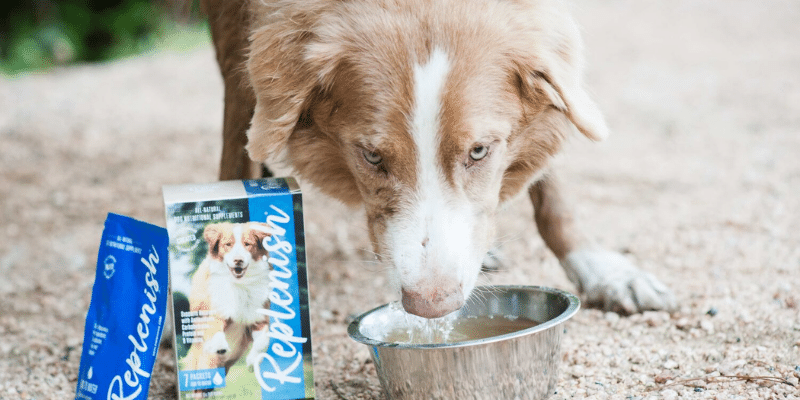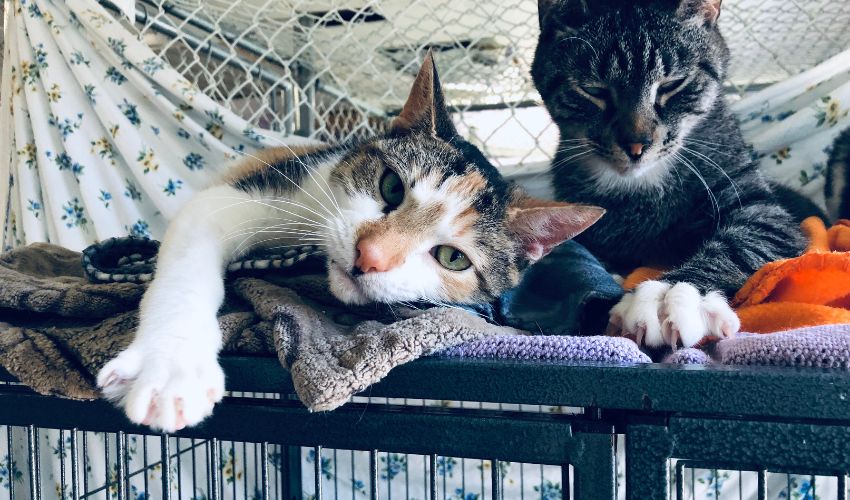Skin conditions in cats can be as diverse as their purr-sonalities, ranging from mild irritations to more serious ailments that require veterinary intervention. As pet parents, it’s essential to recognize the signs of skin issues in our feline companions and understand the underlying causes to provide them with the care they need. In this comprehensive guide, we’ll explore the common skin conditions that affect cats, including their causes, symptoms, treatment options, and strategies for prevention. Let’s dive in and uncover the secrets to maintaining healthy skin and a happy lifestyle for your beloved feline friend.
Understanding Common Skin Conditions in Cats:
Feline Acne:
Feline acne is a common skin condition characterized by the formation of blackheads and pustules on the chin and lips of cats. While the exact cause is not always clear, factors such as poor grooming habits, stress, and a buildup of oils and debris can contribute to its development.
Flea Allergy Dermatitis:
Flea allergy dermatitis occurs when cats develop an allergic reaction to the saliva of fleas. Even a single flea bite can trigger intense itching and discomfort in sensitive cats, leading to excessive scratching, hair loss, and skin lesions.
Ringworm:
Despite its name, ringworm is not caused by worms but rather by a fungal infection that affects the skin, hair, and nails. Cats can contract ringworm through contact with infected animals or contaminated environments, leading to circular patches of hair loss, redness, and crusting.
Atopic Dermatitis:
Atopic dermatitis, also known as allergic dermatitis, is a chronic inflammatory skin condition triggered by environmental allergens such as pollen, dust mites, and mold spores. Cats with atopic dermatitis may experience itching, redness, and skin lesions, particularly on the face, ears, and paws.
Ear Mites:
Ear mites are tiny parasites that infest the ears of cats, causing intense itching, inflammation, and discomfort. In addition to scratching at their ears, affected cats may exhibit head shaking, ear discharge, and foul odor.
Symptoms and Diagnosis:
Recognizing the signs of skin conditions in cats is essential for prompt diagnosis and treatment. Common symptoms may include:
- Itching or scratching
- Hair loss or bald patches
- Redness or inflammation
- Skin lesions or sores
- Flaking or crusting
- Excessive grooming or licking
Diagnosing skin conditions in cats typically involves a thorough physical examination by a veterinarian, along with additional diagnostic tests such as skin scrapings, fungal cultures, blood tests, and allergy testing to identify the underlying cause of the skin problem.
Treatment Options:
Treatment for common skin conditions in cats may vary depending on the underlying cause and severity of the condition. Some common treatment options include:
Topical Therapies:
Topical treatments such as medicated shampoos, sprays, and ointments may be used to soothe irritated skin, reduce inflammation, and control secondary infections. These products may contain ingredients such as antiseptics, corticosteroids, or antimicrobial agents to target specific skin issues.
Oral Medications:
In more severe cases or when topical treatments alone are insufficient, veterinarians may prescribe oral medications such as antibiotics, antifungals, or corticosteroids to address underlying infections, inflammation, or allergic reactions.
Flea Control:
Effective flea control is crucial for managing flea allergy dermatitis and preventing future infestations. Flea control products such as topical spot-ons, oral medications, or flea collars may be recommended to eliminate fleas from the cat’s environment and prevent reinfestation.
Environmental Management:
Minimizing exposure to potential allergens and irritants can help reduce the risk of allergic skin conditions in cats. Strategies may include regular grooming, using hypoallergenic bedding and litter, vacuuming frequently, and implementing measures to control indoor humidity and dust mites.
Nutritional Support:
Providing a balanced and nutritious diet is essential for supporting overall skin health and immune function in cats. Some cats may benefit from specialized diets formulated to support skin and coat health, such as those containing omega-3 fatty acids, antioxidants, and essential vitamins and minerals.
Prevention Strategies:
Preventing skin conditions in cats often involves proactive measures to minimize exposure to potential triggers and maintain overall skin health. Some preventive strategies may include:
Regular Grooming:
Regular grooming can help remove excess oils, dirt, and debris from the cat’s coat, reducing the risk of skin irritation and infections. Brushing your cat regularly can also help distribute natural oils and prevent matting or tangles.
Parasite Control:
Implementing a comprehensive parasite control program is essential for preventing flea infestations, ear mites, and other parasitic skin conditions in cats. Consult with your veterinarian to develop a tailored parasite prevention plan based on your cat’s individual needs and lifestyle.
Environmental Enrichment:
Providing a stimulating and stress-free environment can help promote overall health and well-being in cats, reducing the risk of stress-related skin conditions. Offer plenty of opportunities for play, exercise, and mental stimulation, and create a comfortable living space with cozy bedding, scratching posts, and hiding spots.
Regular Veterinary Check-Ups:
Schedule regular veterinary examinations to monitor your cat’s skin health, discuss any concerns or changes in symptoms, and ensure that they receive appropriate preventive care and screenings. Early detection and intervention are key to preventing skin conditions from becoming more serious or chronic.
Alternative Approaches and Home Remedies:
While conventional treatments are often effective for managing common skin conditions in cats, some pet owners may explore alternative approaches and home remedies to complement traditional therapies. These may include:
Herbal Remedies:
Some herbs, such as chamomile, calendula, and aloe vera, have natural anti-inflammatory and soothing properties that may help alleviate skin irritation and promote healing in cats. These herbs can be applied topically as infused oils, sprays, or poultices, or administered orally as herbal supplements.
Coconut Oil:
Coconut oil is a popular natural remedy for dry skin, itching, and minor skin irritations in cats. When applied topically, coconut oil can help moisturize the skin, reduce inflammation, and protect against bacterial and fungal infections. It can also be added to the cat’s diet as a source of healthy fats and fatty acids.
Oatmeal Baths:
Oatmeal baths are a soothing and gentle remedy for cats with itchy or irritated skin. Oatmeal contains compounds called avenanthramides, which have anti-inflammatory properties and can help relieve itching and redness. Simply dissolve finely ground oatmeal in warm water and allow your cat to soak in the solution for a few minutes before rinsing thoroughly.
Maintaining a Healthy Lifestyle for Cats:
In addition to addressing specific skin conditions, maintaining a healthy lifestyle is essential for supporting overall skin health and well-being in cats. Here are some tips for promoting healthy skin and a happy lifestyle for your feline friend:
Provide a Balanced Diet:
Feed your cat a balanced and nutritious diet that meets their specific nutritional needs, with a focus on high-quality protein sources, essential vitamins and minerals, and limited carbohydrates. Avoid feeding excessive amounts of treats or table scraps, as these can contribute to weight gain and skin issues.
Ensure Proper Hydration:
Make sure your cat has access to clean, fresh water at all times to maintain hydration and support healthy skin function. Some cats may prefer drinking from running water sources, such as pet fountains, so consider providing multiple water bowls throughout your home to encourage drinking.
Regular Exercise and Mental Stimulation:
Encourage regular exercise and play to keep your cat physically active and mentally stimulated. Provide toys, climbing structures, and interactive games to keep your cat entertained and engaged, and schedule regular play sessions to bond with your furry friend and promote overall well-being.
Practice Good Hygiene:
Practice good hygiene habits to keep your cat’s skin and coat clean and healthy. Regular grooming can help remove loose fur, dirt, and debris, reducing the risk of matting, skin irritation, and infections. Use a gentle brush or comb to remove tangles and mats, and trim your cat’s nails regularly to prevent overgrowth and discomfort.
Minimize Stress:
Minimize stressors in your cat’s environment to promote overall health and well-being. Provide a comfortable and secure living space with plenty of hiding spots, resting areas, and vertical space for climbing and exploration. Keep your cat’s routine consistent, and provide opportunities for social interaction and mental stimulation to prevent boredom and anxiety.
Caring for a cat with a skin condition can be challenging, but with the right knowledge and proactive measures, you can help your furry friend enjoy a happy, healthy life. By understanding the causes, symptoms, and treatment options for common skin conditions in cats, implementing preventive strategies to minimize exposure to potential triggers, exploring alternative approaches and home remedies to complement traditional therapies, and maintaining a healthy lifestyle for your cat, you can effectively manage skin issues and provide your feline companion with the care and support they need to thrive. Always consult with your veterinarian for personalized advice and recommendations tailored to your cat’s individual needs and circumstances. Together, we can keep our cats’ skin healthy, their tails wagging, and their whiskers twitching with joy!
















